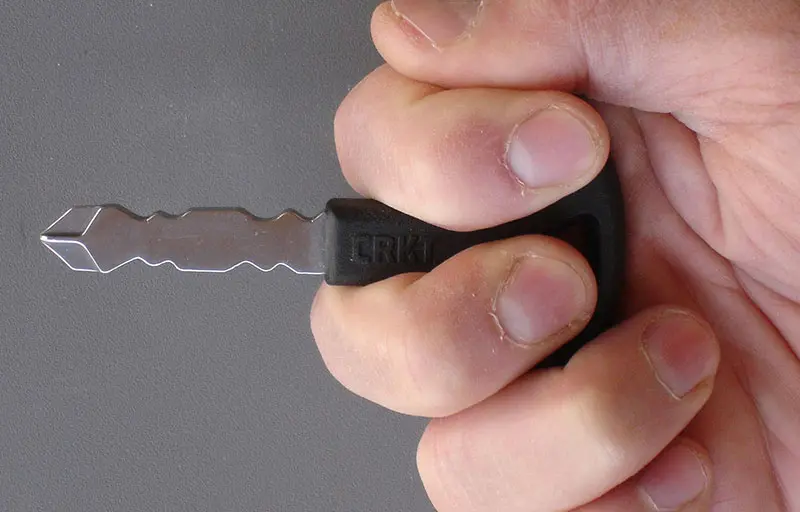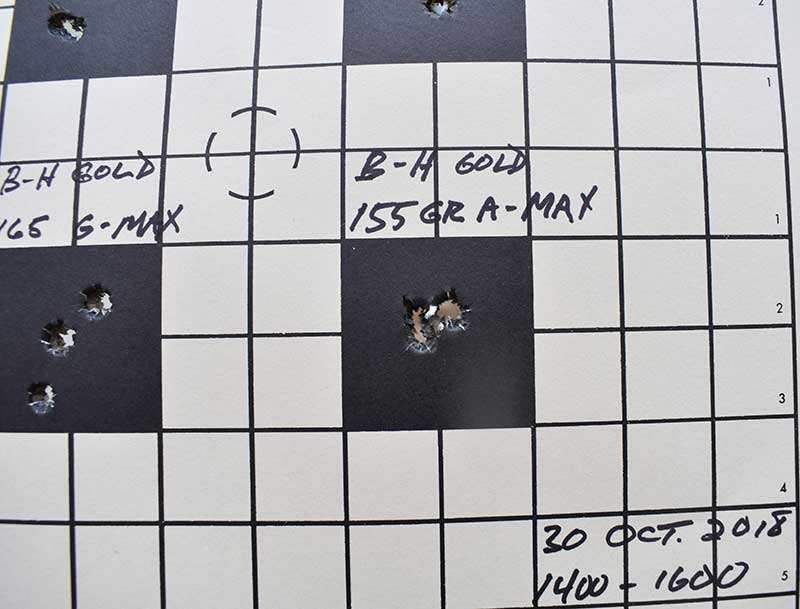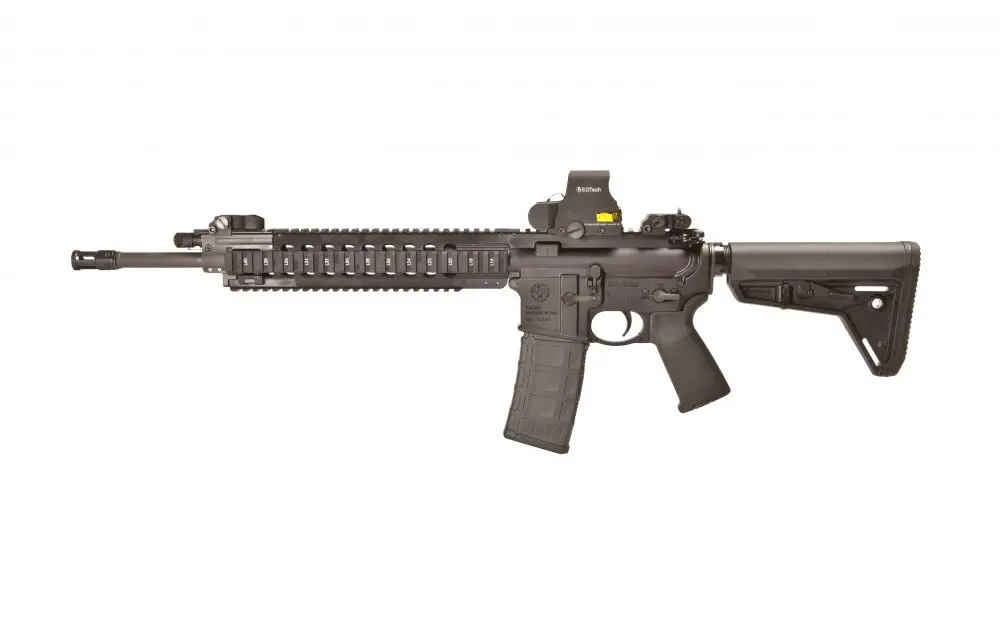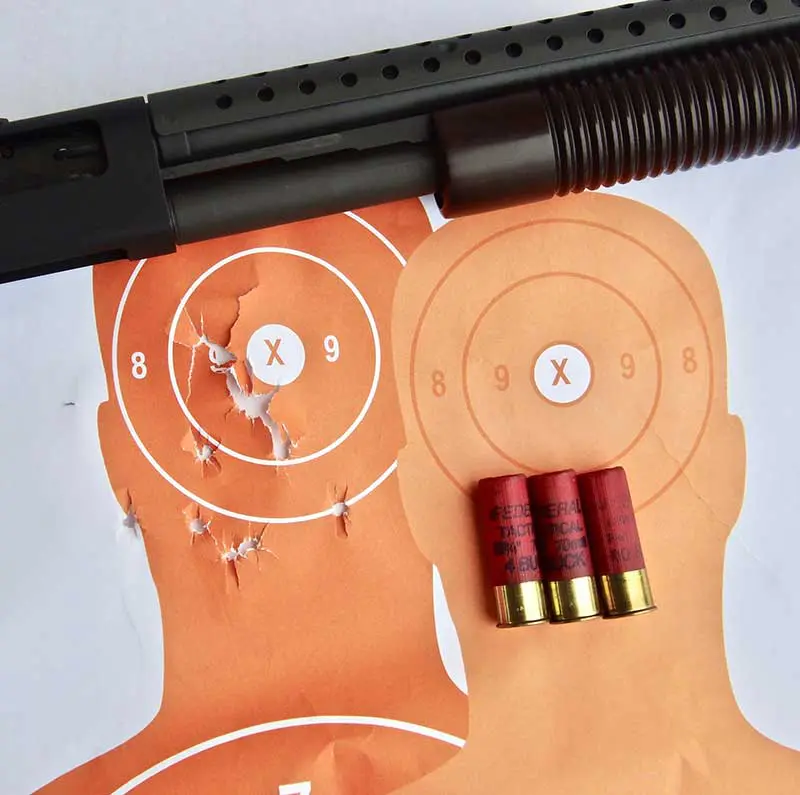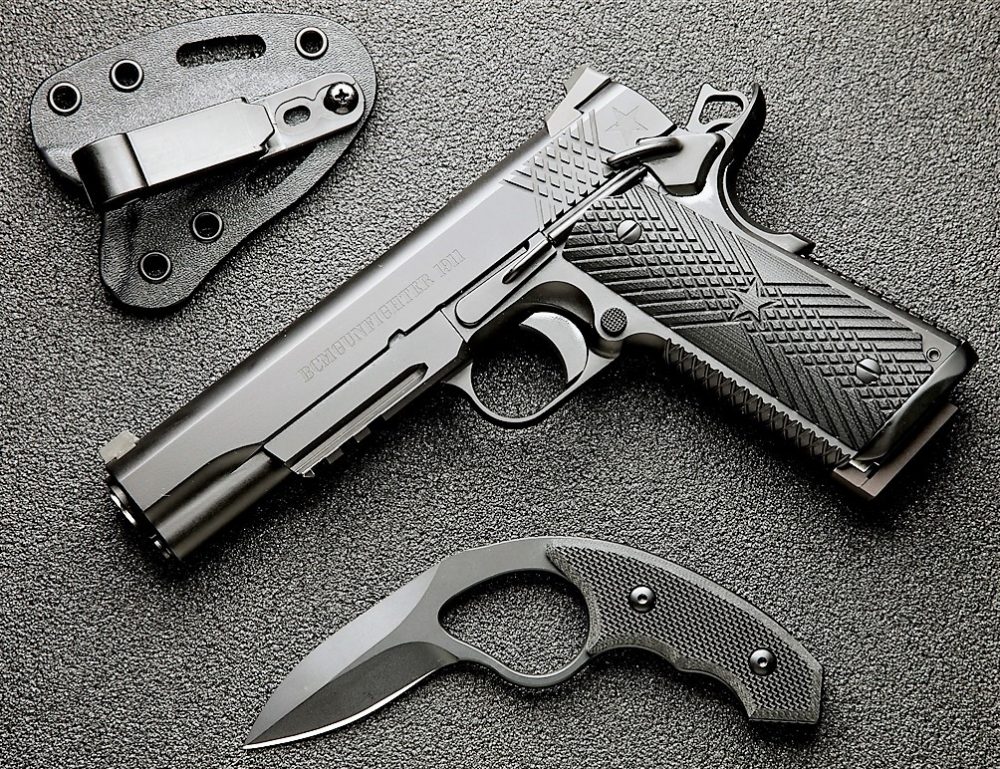
We’re all familiar with the old adage, “Never bring a knife to a gunfight.” And while we should always carry a gun as our primary weapon, having one doesn’t rule out also having the other. In fact, we should carry both.We need to prepare for all contingencies. It’s about options. In a close-quarters lethal-force encounter, we may not have the time or ability to deploy the firearm. Empty hand, knife and gun need to be (or become) an integrated skill set.
A dedicated knife for personal defense is an essential component of everyday carry (EDC) for anyone serious about safety in our troubled times. We not only need to carry a knife but also know how to use it effectively.
Table of Contents
FIXED BLADE VERSUS FOLDER
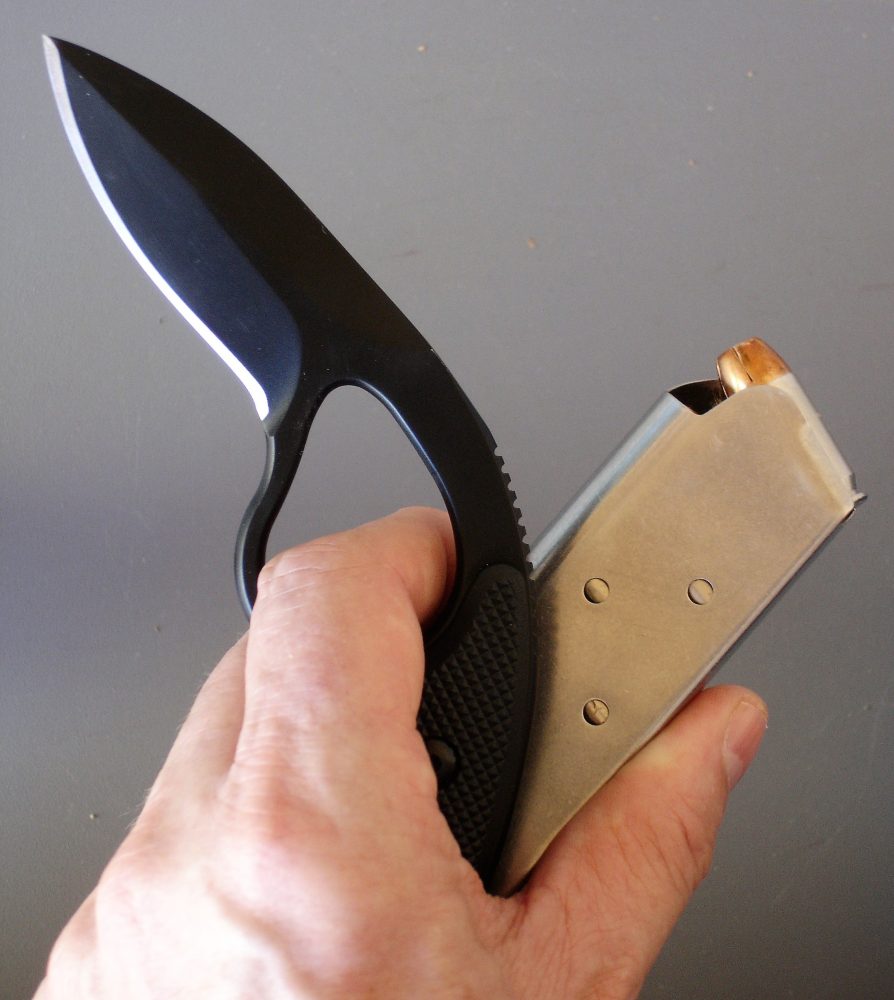
When split seconds count, you want a fixed blade, not a folder. It’s your life that’s on the line. Although folders are the most popular knives for EDC, a fixed-blade knife has key advantages (where legal to carry) for self-defense. These include ease and speed of deployment utilizing only gross motor skills, and no locking mechanism to potentially fail.With a fixed-blade knife, it’s not necessary to transition from an opening grip to a different grip for fighting. You can acquire a proper grip during the draw. The differences in speed and gripping ability between a fixed blade and a folder are substantial in a stress-free training environment. The differences become even more apparent when fighting for your life.
An argument sometimes made against carrying a fixed-blade knife is that the ease and speed with which it can be employed are also liabilities as it can be used against you should an assailant snatch it from you. It’s the same argument that’s made by antigun advocates against the carrying of handguns. Of course, the answers are proper training and discrete carry.
The only real advantage to folders is that they’re convenient. Should you make the decision to carry a folder for personal defense, either for legal reasons or by preference, it’s critical that you practice with it until rapid deployment becomes second nature both under stress and from a variety of positions.
Be aware that even the most highly trained and practiced individual will be slower with a folder than a poorly trained and less practiced individual with a fixed blade.
UP CLOSE AND PERSONAL
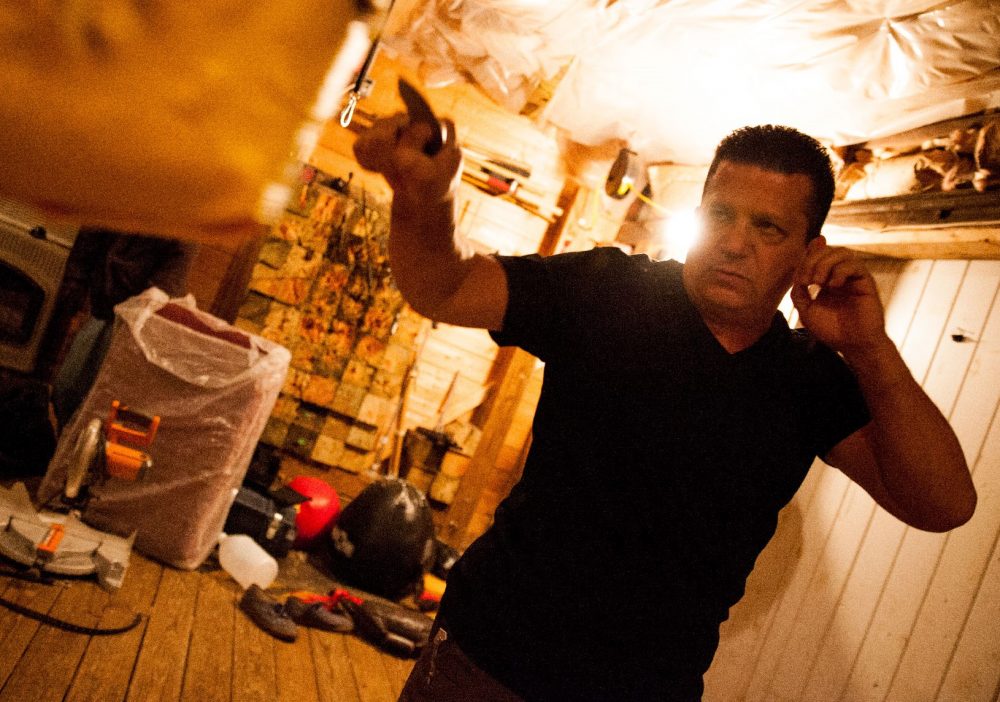
Although we are taught to utilize the concept of “reactionary gap” when dealing with a potential assailant, we deal with people in close proximity all the time. It cannot be avoided. Most assaults take place up close and personal.According to the FBI Uniform Crime Reporting statistics, over 50% of all officer-involved shootings take place at distances of five feet or less. Although I am not aware of any statistics specific for citizen self-defense shootings, I expect that the percentage of close-proximity shootings is even higher. We need to prepare and train for this probability.
Retention shooting is the ability to shoot the bad guy at bad-breath distance while retaining possession of your gun. It’s an essential skill for anyone who carries a firearm for personal defense. Although often neglected, integration of retention shooting training with empty hand and knife techniques is equally essential. Close-quarters training needs to include firearms and combatives.
ACTION VERSUS REACTION
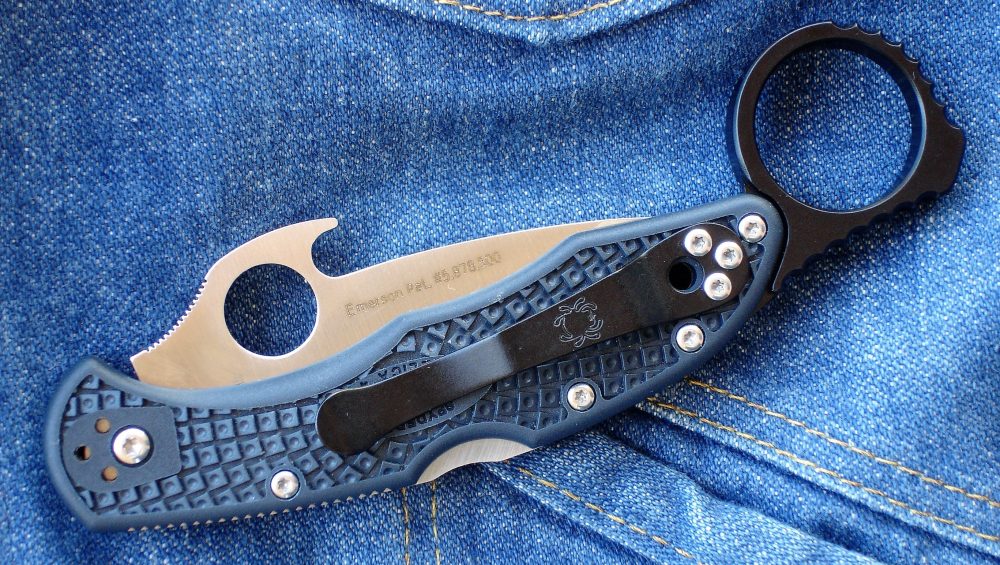
Ballistic motions require a complex sequential interplay among perception, cognition, and muscular-skeletal movement. We learn to accomplish predicable ballistic motions by training to forego the feedback process. This is commonly and erroneously referred to as “muscle memory.”The motion is performed smoothly as long as we don’t let other stimuli interfere with the instructional sequence. Speed and accuracy can be enhanced by the repetitive process, but within the limits set by neuro-physiological and biomechanical processes.
Action is always faster than reaction. Reaction time is the interval time between the presentation of a stimulus and the initiation of the muscular response to that stimulus. The number of stimuli that are presented, each requiring their own response, is a primary factor affecting response.
If there’s only one possible response (simple reaction time), it takes less time to react. If there are multiple possible responses (choice reaction time), it takes longer to react.
Reaction time increases proportionally to the number of possible responses until a point at which it maintains constant despite the increases in possible responses. This is known as Hick’s Law, named after William E. Hick, who discovered it in 1952.
Fitts’ Law, named after Paul Fitts, who proposed it in a 1954 scientific paper, is a predictive model that applies to human psychomotor behavior. It’s a formal relationship that models speed/accuracy tradeoffs in rapid, aimed movement. Fitts also proposed an index of human performance that combines a task’s index of difficulty with the movement time (in seconds) in selecting the target.
Fitts’ Law has been shown to generalize a variety of physical activity and ergonomic situations where speed and accuracy play important roles.
TUELLER DRILL
Most readers have probably heard of the Tueller Drill. It’s a training exercise to prepare against a short-range knife attack when armed only with a holstered handgun. It has its origins with Dennis Tueller, who was at the time a Sergeant with the Salt Lake City Police Depar™ent.
Sergeant Tueller wondered how quickly an attacker with a knife could cover 21 feet. He timed volunteers to see how fast they could cover the distance to stab the target and discovered they could do so in 1.5 seconds.
The results were first published in a March 1983 S.W.A.T. magazine article titled How Close Is Too Close? and in a police training video with the same title. When it comes to survival, weapons and tactics, S.W.A.T. has always been ahead of the curve.
The Discovery Channel television program MythBusters covered the Tueller Drill in a 2012 episode titled “Duel Dilemmas.” The MythBusters team found that with attacks initiated from 20 feet, it was possible to shoot a knife-wielding attacker when armed with a holstered handgun, but only just as the attacker reached the shooter. At shorter distances, the attacker was always able to stab the defender prior to being shot.
In the MythBusters scenario, the subjects were aware in advance of the knife attack and the response (simple reaction time). The reactionary gap would be significantly greater in most real-world encounters.
TACTICS, TECHNIQUES & PROCEDURES
Although the employment of appropriate tactics, techniques and procedures (TTP) cannot eliminate the reactionary gap, they can lessen it.
Many of the commonly taught retention shooting techniques rarely work. They may be great on the square range but can get you killed in the real world. At bad-breath distance, you need to defend yourself from the threat before you can draw your gun. Here empty-hand techniques and possibly the use of the blade come into play.
The use of a knife also enables you to gain physical balance, a dominant body position, and leverage, or to create space before introducing a gun into the fight. Some examples where this may be necessary are when in a lethal clinch, when attacked from behind, on the ground in a bad body position, or thrown over objects.
You need to be able to seamlessly transition from hand to knife and from knife to gun. You must be able to draw your knife in a critical situation and still be able to rapidly transition to your handgun. Passing the knife between your hands, attempting to re-sheath it, or dropping it to the ground during transitions can create additional problems.
SELECTING A FIXED-BLADE KNIFE
A number of concealable fixed-blade knives have been specifically designed to facilitate seamless transitions while retaining control of the knife. Popular examples include the Benchmade® Knife Company SOCP® Dagger; ColonelBlades™ Colonel LowVz™, Colonel FullBird™, NCO™ LowVz, and NCO FullBird; Skallywag Dagger; Spartan Blades CQB Tool; and TOPS Knives I.C.E. Dagger.
What sets these knives apart from conventional knives is that they have a finger ring or hole for retention, allowing full use of the knife hand to perform tasks without having to let go of the knife. They differ from karambit knives in that they’re designed for stabbing and penetration. With the exception of the Skallywag Dagger, which is designed strictly for stabbing, you can also slash with them.
Although karambit knives also have a finger ring, the curved blade sacrifices stabbing capability compared to other blade styles. Much like a tiger’s claw, a karambit knife is primarily a slashing and cutting weapon. You can stab with it, but the blade profile limits penetration. The simpler and more instinctive a knife is to employ and the more reliant it is on gross motor skills, the more effective it will be in an actual fight.
CARRYING THE KNIFE
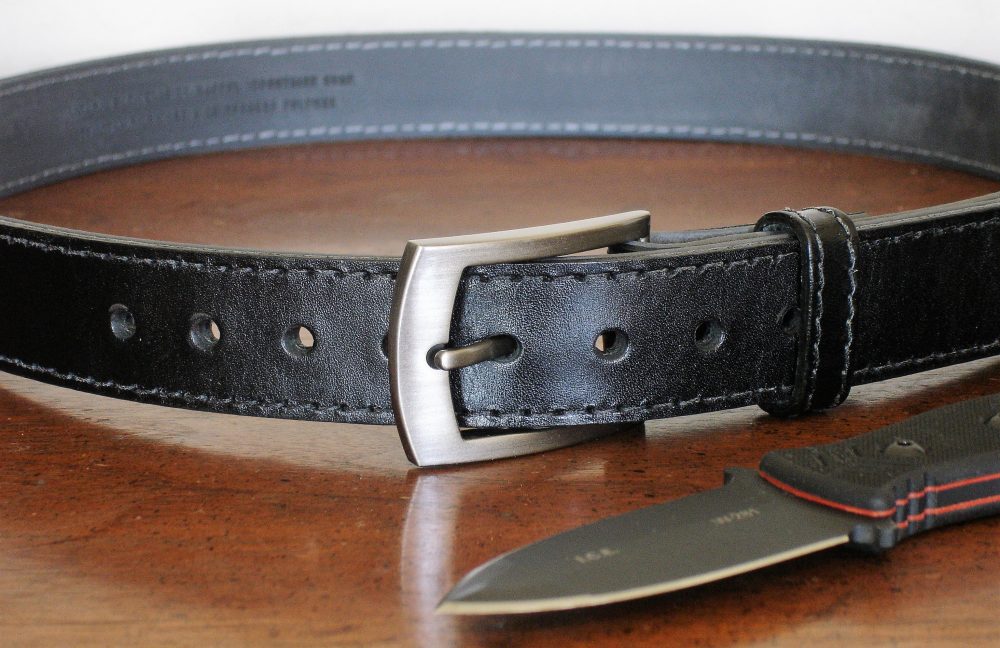
The sheath is to a knife as a holster is to a handgun. As with a holster, the sheath must provide secure retention while allowing a rapid draw. The mounting options must assure positive retention of the sheath during everyday movement and during the drawstroke and re-sheathing.A good gun belt is an important part of the integrated knife and gun system. Regular belts lack the necessary rigidity to support and anchor things in place. The Magpul® Tejas Gun Belt line is a good example of what gun belts should be.
Magpul belts are available in 1.25- and 1.5-inch widths. For everyday wear, I especially like the 1.25-inch Magpul Tejas Gun Belt “El Empresario.” It combines dress-belt looks and comfort with gun-belt performance. The quality and workmanship are outstanding.
The El Empresario features an Italian aniline full-grain leather exterior and flexible reinforced polymer interior. It’s flexible enough for comfort but rigid enough not to sag under the weight of a holstered gun. It’s available in four colors. As with all Magpul belts, it has a removable buckle with tool-free fasteners.
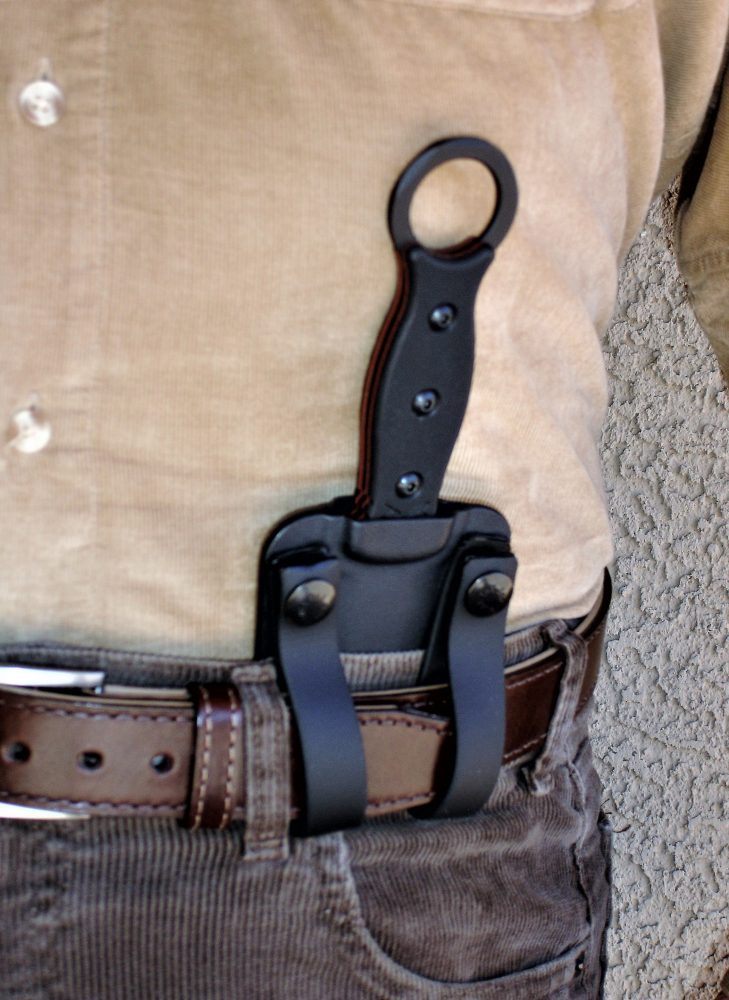
The knife needs to be carried where it can be easily and quickly accessed. I generally prefer appendix carry for short- to medium-length fixed-blade knives, for several reasons. The closer the knife is to the body midline, the easier it is to access and deploy with either hand. It’s also easier to access and deploy from a clinch or if knocked to the ground.Fixed-blade knives carried for personal defense should always be carried concealed. Not only does this lessen the chances of a knife grab by an assailant, but it also provides the tactical advantage of surprise.
They should only be used for self-defense. They need to be kept sharp and always ready. Carry a separate knife or multi-tool for everyday tasks.
TRAINING
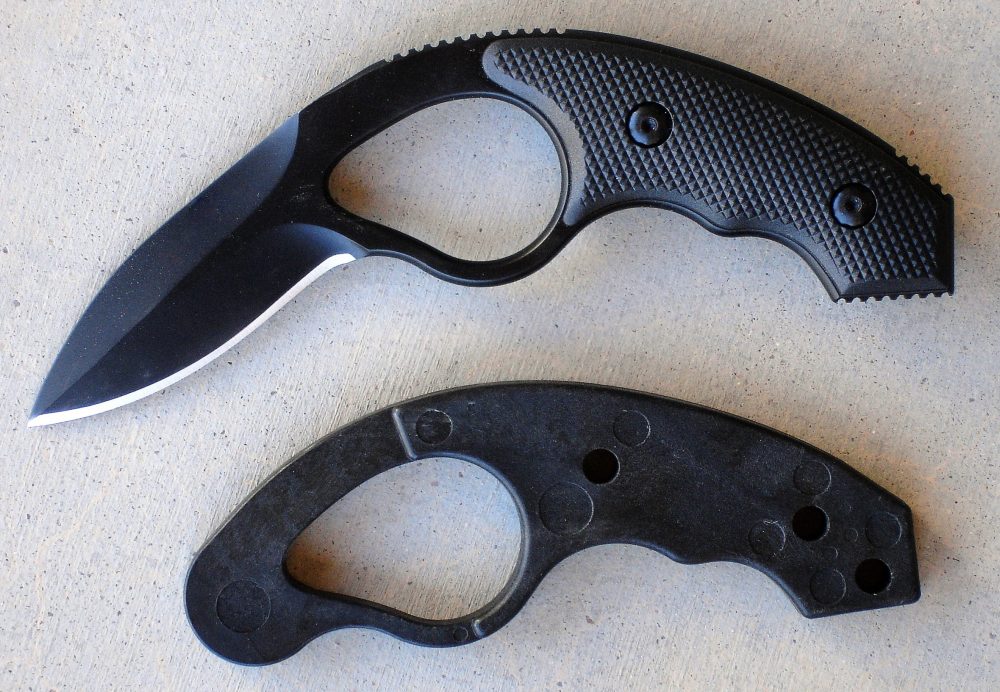
Combatives should be kept simple and instinctive. This is a failing of most martial arts. Focusing on fewer skills and skills that require less precision helps you respond more effectively to an unexpected attack.Fewer choices and choices that require only gross motor skills result in faster response time. They are also easier to maintain. Combatives skills are perishable skills. Training models that allow safe practice are available for many knives.
Always bring a knife (and a gun) to a gunfight. It’s the fool who doesn’t.
Eugene Nielsen is a principal in an investigative agency specializing in protective intelligence and threat management. He has a Bachelor of Arts degree in Political Science from the University of California.
SOURCES:
BENCHMADE KNIFE COMPANY
(800) 800-7427
www.benchmade.com
BRAVO COMPANY USA, INC.
(877) BRAVO-CO
www.bravocompanyusa.com
COLONELBLADES
www.colonelblades.com
MAGPUL INDUSTRIES
(877) 4MAGPUL
www.magpul.com
SKALLYWAG TACTICAL
(866) 259-6905
www.skallywagtactical.com
SPARTAN BLADES, LLC
(910) 757-0035
www.spartanbladesusa.com
SPYDERCO
(800) 525-7770
www.spyderco.com
TOPS KNIVES
(208) 552-2945
www.topsknives.com
WISE MEN COMPANY
(717) 723-8380
www.wisemencompany.com

